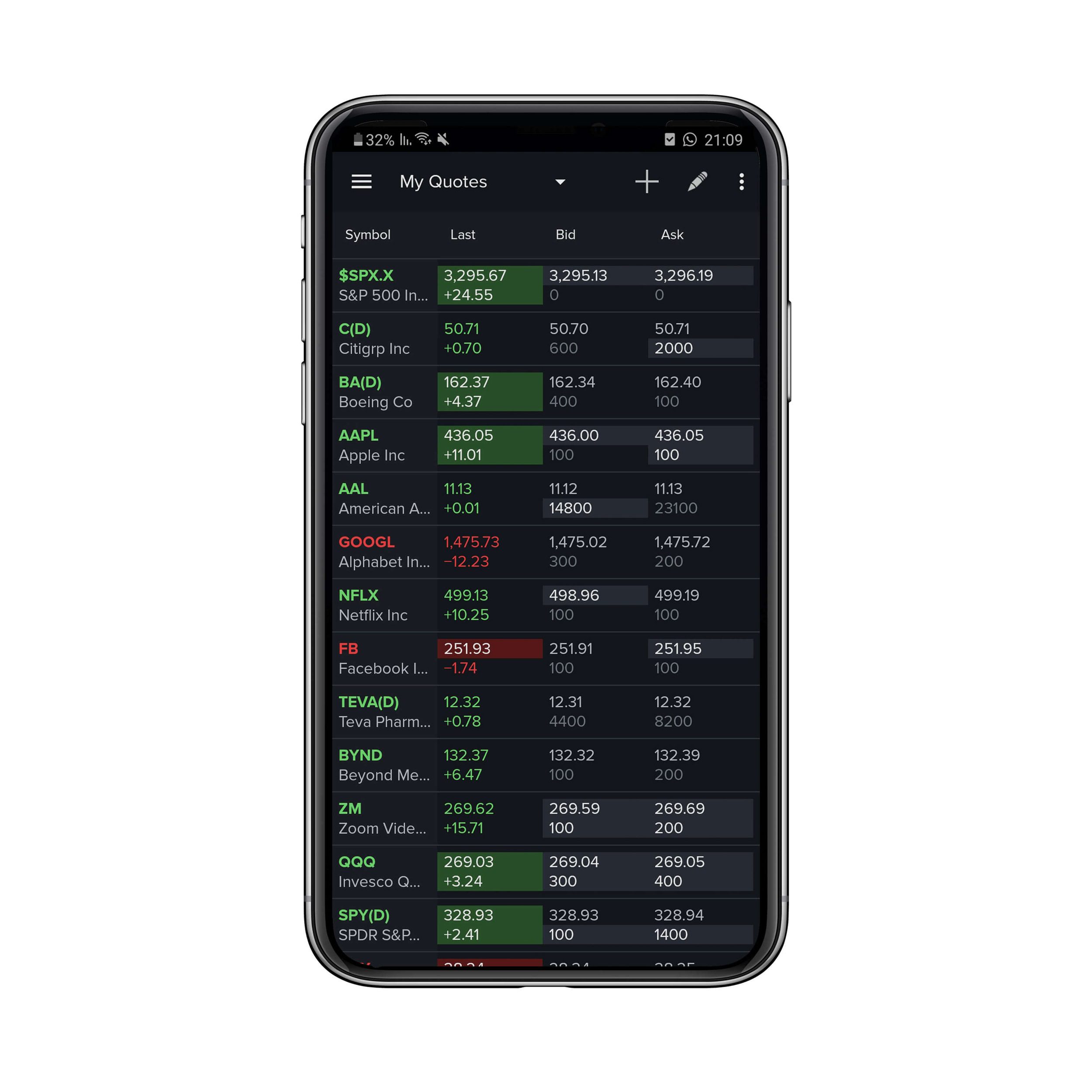

Finance
What Does Filling The Gap Mean In Stocks
Modified: February 21, 2024
Understanding the concept of filling the gap in stocks and its significance in finance. Learn how this technique can help maximize gains and minimize risks in the market.
(Many of the links in this article redirect to a specific reviewed product. Your purchase of these products through affiliate links helps to generate commission for LiveWell, at no extra cost. Learn more)
Table of Contents
Introduction
Welcome to the exciting world of stocks! Stocks have long been a popular investment choice for individuals looking to grow their wealth and secure their financial future. However, navigating the stock market can be intimidating, especially for beginners.
One concept that often arises in stock trading is the idea of “filling the gap.” This term refers to a phenomenon that occurs when the price of a stock opens significantly higher or lower than its previous closing price, creating a gap on the chart. Understanding what filling the gap means and its implications can be crucial for investors looking to make informed trading decisions.
In this article, we will delve into the concept of filling the gap in stocks, its definition, importance, factors influencing it, strategies to take advantage of it, as well as the risks and challenges involved. We will also provide real-life examples to help illustrate how filling the gap can impact stock prices.
Whether you are a seasoned investor looking to deepen your understanding or a novice trader seeking to expand your knowledge, this article will serve as a comprehensive guide to the world of filling the gap in stocks.
Understanding the Gap in Stocks
Before we delve into the concept of filling the gap, it is important to have a basic understanding of what a gap is in the context of stock trading. In simple terms, a gap refers to a significant difference between the closing price of a stock and the opening price of the stock on the next trading day.
Gaps typically occur overnight or during periods when the market is closed, such as weekends or holidays. They are represented on a price chart as a space or “gap” between two adjacent candles or bars. A gap can occur in any direction: up, down, or even sideways.
There are different types of gaps, each with its own characteristics and implications. Some common types include:
- Common Gap: This is the most frequent type of gap and often occurs due to normal market fluctuations. It has no significant implications and tends to get filled relatively quickly.
- Breakaway Gap: A breakaway gap typically occurs at the beginning of a significant trend and signifies a strong shift in market sentiment. It tends to have a more lasting impact on stock prices.
- Runaway Gap: Also known as a measuring gap or continuation gap, a runaway gap occurs in the middle of a trend and indicates that the current momentum is likely to continue.
- Exhaustion Gap: An exhaustion gap appears towards the end of a trend and signals a potential reversal in the stock’s direction.
Understanding these different types of gaps can help traders interpret price movements and make more informed trading decisions.
Now that we have a grasp of what a gap is in stocks, let’s move on to the concept of filling the gap and what it entails.
Definition of Filling the Gap
Filling the gap in stocks refers to the price movement that occurs when the price of a stock rises or falls to fill the gap created by the difference between the previous day’s closing price and the next day’s opening price. In other words, it is the movement of the stock price back to the level where the gap on the chart is closed.
When a stock opens significantly higher or lower than its previous closing price, a gap is formed on the price chart. This gap represents an area where there is no trading activity or price movement. Traders and investors monitor these gaps because they can provide valuable insights into market sentiment and potential future price movements.
Filling the gap occurs when the price of the stock moves in the opposite direction of the gap to reach the level of the previous day’s closing price. If the gap is filled completely, it means that the price has returned to the same level it was before the gap occurred. However, it’s important to note that not all gaps are filled, and the degree to which a gap is filled can vary.
There are two main scenarios when it comes to filling the gap:
- Gap Up: A gap up occurs when the stock opens significantly higher than its previous day’s closing price. In this case, filling the gap means that the price decreases to reach the level of the previous day’s closing price.
- Gap Down: A gap down occurs when the stock opens significantly lower than its previous day’s closing price. Filling the gap in this scenario means that the price increases to reach the level of the previous day’s closing price.
Traders and investors closely monitor the gap filling process as it can provide valuable trading opportunities. The speed and extent to which a gap is filled can provide insights into market dynamics and the potential strength or weakness of a stock’s trend.
Now that we have defined filling the gap, let’s explore the importance of this concept in stock trading.
Importance of Filling the Gap
Filling the gap is an important concept in stock trading and technical analysis for several reasons. Understanding the importance of filling the gap can help traders and investors make more informed decisions and capitalize on potential opportunities in the market.
1. Price Validation: When a gap is filled, it indicates that the market has reevaluated the stock’s value and reestablished a trading range. This validation of price levels can provide confidence to traders and investors, signaling that the gap was not just a temporary anomaly but a significant price point.
2. Support and Resistance Levels: Gaps can act as support or resistance levels on the price chart. When a gap is filled, it often becomes a level of support or resistance, where the price tends to react in subsequent trading sessions. Traders use these levels to identify potential entry or exit points and set stop-loss orders.
3. Trend Confirmation: Filling the gap can confirm the strength or weakness of a trend. If a stock experiences a breakaway gap and successfully fills it, it can indicate a continuation of the trend. Conversely, if a stock fails to fill a gap or only partially fills it, it may suggest a potential trend reversal.
4. Trading Opportunities: Filling the gap presents trading opportunities for both short-term and long-term traders. Some traders specialize in trading the gap fill, taking advantage of the price movement back to the previous day’s closing price. By identifying gaps and anticipating their potential filling, traders can enter positions with a favorable risk-reward ratio.
5. Market Sentiment: Gaps can also provide insights into market sentiment and investor psychology. A gap up may indicate positive news or bullish sentiment, while a gap down could signify negative news or bearish sentiment. Monitoring the filling of the gap can offer clues about investor reactions and the overall market sentiment.
Overall, filling the gap is important in stock trading as it can validate price levels, provide support and resistance levels, confirm trends, present trading opportunities, and offer insights into market sentiment. Traders and investors who understand the significance of filling the gap can use it as a tool to enhance their trading strategies and improve their decision-making process.
Now that we grasp the importance of filling the gap, let’s explore the various factors that can influence this phenomenon.
Factors Influencing Filling the Gap
Filling the gap in stocks is influenced by a variety of factors, including market dynamics, investor sentiment, and the overall economic climate. Understanding these factors can help traders assess the likelihood of a gap getting filled and make more informed trading decisions. Here are some key factors that influence the filling of gaps:
1. Trading Volume: The volume of trading activity plays a significant role in filling the gap. Higher trading volume indicates increased market participation and can contribute to the speed at which a gap is filled. If a gap has above-average volume during its formation, it suggests stronger market interest in filling the gap.
2. Market Trend: The overall market trend can influence the filling of gaps. In an uptrending market, gap downs may be more likely to get filled as buyers step in to drive prices higher. Conversely, in a downtrending market, gap ups may have a higher chance of getting filled as sellers take the opportunity to push prices lower.
3. News and Events: Significant news or unexpected events can impact the filling of gaps. Positive news, such as strong earnings reports or favorable economic data, can drive prices higher and increase the likelihood of filling a gap to the upside. Conversely, negative news or adverse events can lead to gap fills on the downside.
4. Investor Sentiment: The sentiment of market participants can heavily influence the filling of gaps. Investor optimism or pessimism can drive prices to fill gaps as traders anticipate the previous price level as a resistance or support zone. Sentiment indicators, such as market breadth, sentiment surveys, and option activity, can provide insights into investor sentiment and influence the likelihood of gap filling.
5. Technical Patterns: Technical analysis plays a crucial role in identifying potential gap fillings. Traders often use support and resistance levels, trendlines, and chart patterns to assess the likelihood of a gap getting filled. Technical indicators, such as moving averages, can also provide additional confirmation of potential gap fillings.
6. Market Liquidity: The level of market liquidity can impact the filling of gaps. In highly liquid markets with ample trading volume, gaps are more likely to get filled quickly as there is sufficient buying or selling pressure. However, in illiquid markets or stocks with lower trading volume, filling the gap may take more time or may not occur at all.
7. Trading Strategies: Various trading strategies, such as gap trading or mean reversion, can influence the filling of gaps. Traders who employ specific strategies based on gap analysis and price patterns may actively participate in filling the gap, further influencing the price movement.
It’s essential to consider these factors and analyze them within the specific context of each stock and market situation. By understanding the factors that can impact the filling of gaps, traders can make more informed decisions and adapt their strategies accordingly.
Now that we have explored the factors influencing gap filling, let’s move on to the strategies traders can employ to take advantage of this phenomenon.
Strategies for Filling the Gap
Traders have developed various strategies to take advantage of the filling of gaps in stocks. These strategies aim to capitalize on the price movement back to the previous day’s closing price or to exploit potential continuation or reversal patterns. Here are some common strategies used by traders:
1. Gap-Fading Strategy: This strategy involves taking positions contrary to the direction of the gap. If a stock gaps up, traders may take short positions with the expectation of a price decline to fill the gap. Likewise, if a stock gaps down, traders may take long positions anticipating a price increase to fill the gap. Gap-fading strategies typically require close monitoring of price action and quick decision-making.
2. Gap-Filling Strategy: This strategy involves waiting for the gap to get filled and then entering a position in the direction of the gap fill. Traders may enter long positions once a gap down is filled and the price starts to rise, or short positions once a gap up is filled and the price starts to decline. The gap fill acts as a confirmation of price movement, and traders aim to ride the trend after it is established.
3. Gap Continuation Strategy: This strategy focuses on identifying and trading gaps that occur in the middle of a trend as continuation patterns. Traders anticipate that the price will continue in the direction of the gap and take positions accordingly. For example, in an uptrend, a runaway gap up can be seen as a signal to enter or add to long positions.
4. Breakaway Gap Strategy: Breakaway gaps often signal the beginning of a significant trend, and traders may employ this strategy to capture the initial price movement following the gap. Traders may enter positions in the direction of the gap with the expectation that the trend will continue. Stop-loss orders are usually placed below or above the gap to manage risk.
5. Momentum Trading: Traders who specialize in momentum trading may use gap-filled stocks as opportunities to enter positions in the direction of the trend. They look for stocks that have successfully filled the gap and show strong momentum as an indication of potential further price movement.
6. Technical Analysis: Traders often use technical analysis tools and indicators to support their gap trading strategies. This can include trendlines, moving averages, and chart patterns, which offer additional confirmation and identification of potential entry and exit points.
It is important to note that gap trading strategies involve risks, and not all gaps are guaranteed to be filled or present profitable opportunities. Traders should conduct thorough research and analysis before implementing any strategy and use risk management techniques to protect their capital.
Now, let’s explore the risks and challenges associated with filling the gap in stocks.
Risks and Challenges in Filling the Gap
While filling the gap in stocks can present lucrative opportunities, it is important for traders to be aware of the risks and challenges associated with this phenomenon. Understanding these risks can help traders navigate the market more effectively and make informed decisions. Here are some common risks and challenges when it comes to filling the gap:
1. False Breakouts: Sometimes, a stock may appear to be filling the gap, only to reverse direction and continue the original trend. This can result in false breakouts, leading traders to enter positions prematurely or incorrectly. It is crucial to look for confirmation signals and use additional technical analysis tools to assess the strength of the gap fill.
2. Gap Resistance or Support: In some cases, a gap may act as a strong resistance or support level, where the price struggles to fill the gap completely. Traders need to be mindful of these levels and consider them as potential areas for reversal or continuation of the trend.
3. Gap Fills on Low Volume: Filling the gap on low trading volume can indicate a lack of market interest or participation. Low volume gap fills may lack conviction and may be followed by price reversals. Traders should consider volume analysis as part of their decision-making process when evaluating the likelihood of a gap getting filled.
4. Gap Sizes: The size of the gap can impact the trading strategy and potential risks involved. Small gaps may be more likely to get filled quickly, while larger gaps may take longer to fill or not get filled at all. Larger gaps may also carry higher volatility and present greater risks when entering positions.
5. Market Volatility: Volatile market conditions can amplify the risks associated with filling the gap. Rapid price movements and increased market uncertainty can lead to heightened volatility during the gap filling process. Traders should adjust their risk management strategies and account for market volatility when trading gaps.
6. Slippage and Execution: Due to the nature of gaps, there is a possibility of slippage and imperfect execution when entering or exiting positions. Gaps can result in sudden price jumps or drops, leading to potential discrepancies between desired execution prices and actual execution prices. Traders should be prepared for slippage and consider using limit orders or other order types to manage execution risks.
7. Overlaps and Multiple Gaps: In certain cases, multiple gaps can occur within a short period, making it challenging to determine which gap to focus on or trade. Traders need to carefully analyze the gaps and prioritize their trading strategies based on the significance and potential impact of each gap.
It’s important for traders to remember that trading involves risks, and filling the gap is no exception. To mitigate these risks, traders should conduct thorough analysis, use risk management techniques, and stay updated with market news and events that may influence the filling of gaps.
Now, let’s explore some real-life examples of filling the gap in stocks to illustrate the concept in practice.
Examples of Filling the Gap in Stocks
Understanding the concept of filling the gap in stocks can be further enhanced by examining real-life examples. Let’s explore a few instances where gaps were filled and their implications on stock prices:
1. Company Earnings Release: Imagine a scenario where a company announces quarterly earnings that exceed market expectations. As a result, the stock gaps up significantly the next trading day. The gap represents the price difference between the previous day’s closing price and the higher opening price. Over the next few trading sessions, if buying pressure subsides and the stock price declines, filling the gap occurs when the price moves back down towards the previous day’s closing price.
2. Market News Impact: Let’s consider a situation where a market-wide news event or economic data release causes a stock to gap down at the opening. This gap signals a negative market sentiment or reaction to the news. If the stock subsequently reverses course and starts to rise, the gap can be filled when the price reaches the level of the previous day’s closing price.
3. Technical Breakout: In technical analysis, traders often study chart patterns to identify potential breakouts and gaps. For instance, a stock that forms a bullish continuation pattern, such as a flag pattern, may experience a gap up when the pattern confirms. If the stock continues to rise and fills the gap by reaching the previous day’s closing price, it can indicate bullish strength and further upward potential.
4. Reversal Patterns: Gaps can also play a significant role in identifying potential reversals in stock trends. For example, a stock that has been in a prolonged uptrend may experience a gap up at the top of its price movement. If the stock fails to sustain the momentum and starts declining, filling the gap occurs when the price moves down to the level of the previous day’s closing price. This reversal can signal a change in market sentiment and a potential trend reversal.
These examples illustrate how filling the gap can occur in various market scenarios. Traders and investors analyze these gaps and their subsequent filling to make informed decisions about entry, exit, or position adjustments.
It’s important to note that the filling of gaps can vary in terms of the speed, extent, and significance. Traders should consider other technical factors, market conditions, and risk management techniques before making trading decisions based solely on the concept of filling the gap.
Now, let’s summarize the key points discussed in this article.
Conclusion
Filling the gap in stocks is a phenomenon that occurs when the price of a stock moves to close the gap created by the difference between the previous day’s closing price and the next day’s opening price. Understanding the concept of filling the gap is crucial for traders and investors as it can provide valuable insights into price validation, support and resistance levels, trend confirmation, and trading opportunities.
In this article, we explored the definition of filling the gap and its importance in stock trading. We discussed different types of gaps, such as common gaps, breakaway gaps, runaway gaps, and exhaustion gaps, to understand their characteristics and implications.
We also examined the factors that influence filling the gap, including trading volume, market trend, news and events, investor sentiment, technical patterns, and market liquidity. These factors play a significant role in determining whether a gap gets filled and how quickly it occurs.
Furthermore, we highlighted various strategies that traders employ to take advantage of filling the gap. These strategies include gap-fading, gap-filling, gap continuation, breakaway gaps, momentum trading, and technical analysis. Traders must assess the risks associated with gap trading, such as false breakouts, gap resistance or support, low volume fills, market volatility, slippage, and overlaps.
Real-life examples illustrated the concept of filling the gap and how it can impact stock prices, including earnings releases, market news events, technical breakouts, and reversal patterns.
In conclusion, filling the gap in stocks is a dynamic aspect of the market that provides traders and investors with opportunities to capitalize on price movements, validate support and resistance levels, and confirm trends. However, it is important to conduct thorough analysis, employ risk management techniques, and consider other technical and fundamental factors before making trading decisions based solely on filling the gap.
By understanding and incorporating the concept of filling the gap into one’s trading strategy, individuals can enhance their chances of making informed and profitable trading decisions in the stock market.














